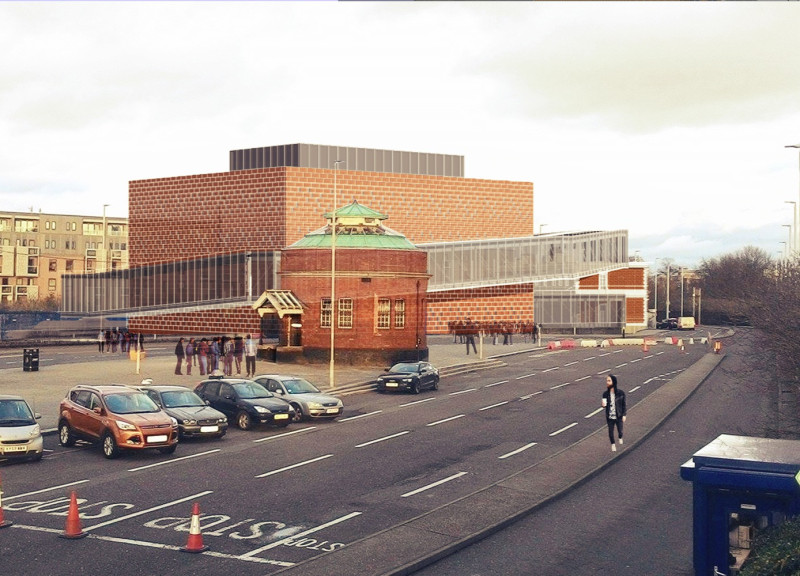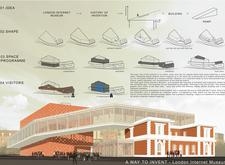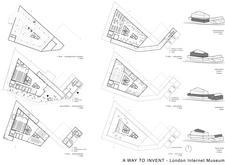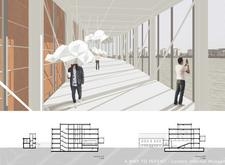5 key facts about this project
### Project Overview
The London Internet Museum is located in a central area of London, intentionally designed to celebrate and document the history of the Internet. The museum aims to provide a comprehensive experience for a diverse range of visitors, from casual tourists to technology enthusiasts. By intertwining historical narratives with contemporary design elements, the building serves as a platform for both education and inspiration.
### Spatial Program and User Engagement
The spatial organization of the museum emphasizes accessibility and engagement. Key areas include a ground floor dedicated to presentations and public gatherings, featuring a spacious foyer and auditorium that facilitate interactions and events. The first and second floors house educational IT suites and classrooms, reflecting a commitment to public education regarding technological advancements. The third floor is allocated for exhibitions that display historical artifacts linked to the evolution of technology. Additionally, a thoughtfully positioned food zone serves as a social space, allowing visitors to relax and interact amidst the rich contextual framework of the museum.
### Materiality and Design Philosophy
The material choices in the project play a crucial role in establishing a dialogue between traditional and contemporary architectural practices. The use of London stock brick anchors the structure within its historical context, while ceramic facade cladding offers a modern aesthetic that complements the surroundings. Large expanses of glass create a visual connection between the interior and exterior, enhancing natural light and openness. Supported by a steel framework, the design allows for flexibility and innovation in form, reflecting the dynamic nature of information technology.





















































